living luminaire
The Living Luminaire imitates the gentle radiance produced when light passes through (semi-transparent) human skin. Its anthropomorphic design balances on the boundary between uncanny and soothing. The pendant’s armature, resembling bones, is crafted from poplar wood, while the shade is composed of a skin-like material, namely natural rubber (latex). By emitting a cozy glow and establishing a comforting ambiance, the Living Luminaire is an ideal addition to any home space.
January - April 2023 | Professor Kim Markel | Product Design Studio 3





Inspiration
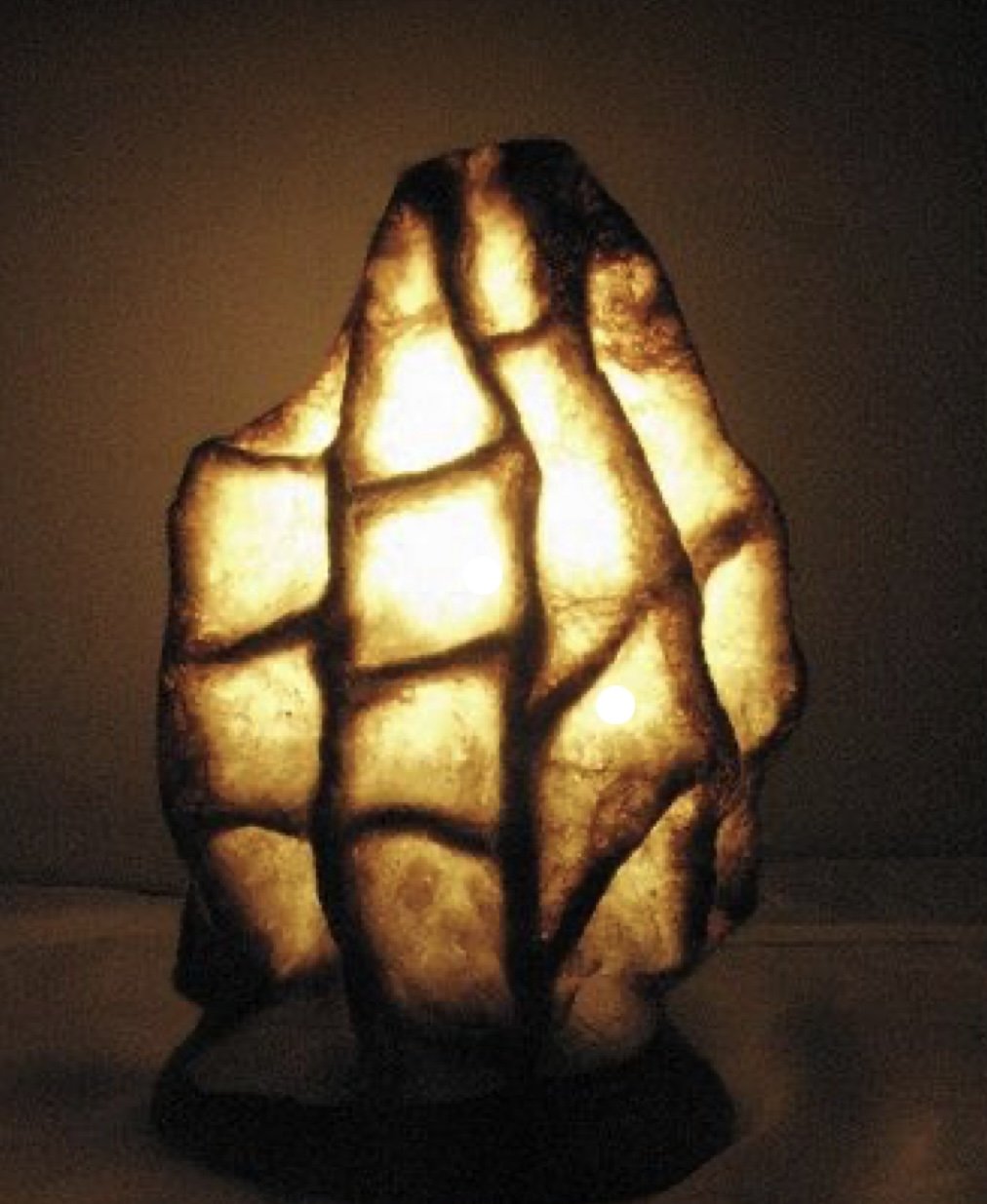
This Piece by Burova Medvedeva served as another source of inspiration for the idea of bones being the structure of my light. I could not find much information on this piece but I know that it was made with felting wool.
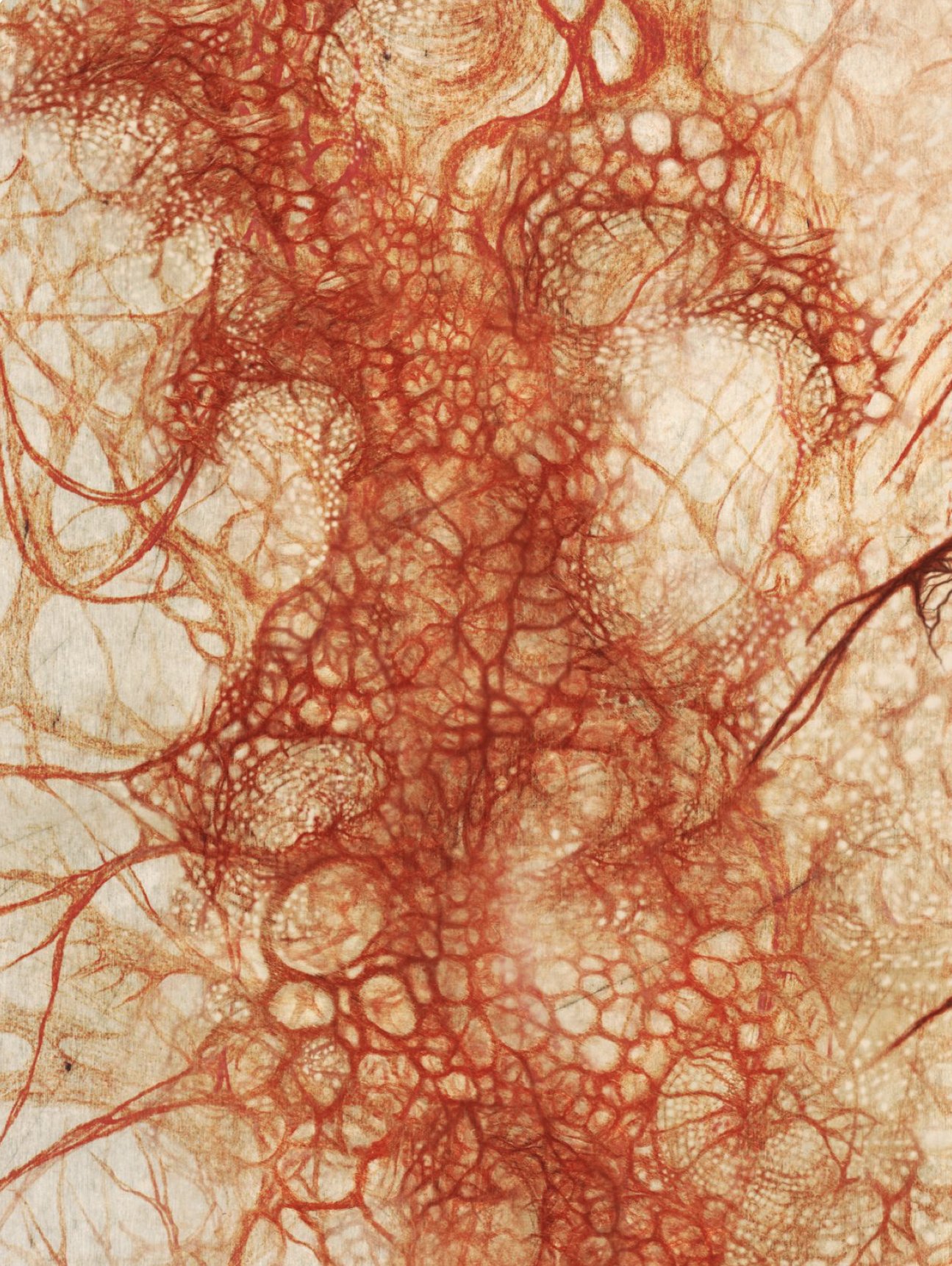
This is a piece by Rodrigo Lobo (I believe, though there is little information about it on the internet) that I found on Pinterest. It was not a direct reference for my work but my luminaire was certainly influenced by the feelings that his work gave me.
I found this piece in the Healthier Materials Lab at school, and if I were able to access it more easily, I would have loved to experiment with “Blood Leather,” a material developed by Shahar Livine. It is made from the fat and bones driven from waste streams of staughterhouses. This would have been a different direction for my project conceptually, but one that I would still like to explore in the future.
Process
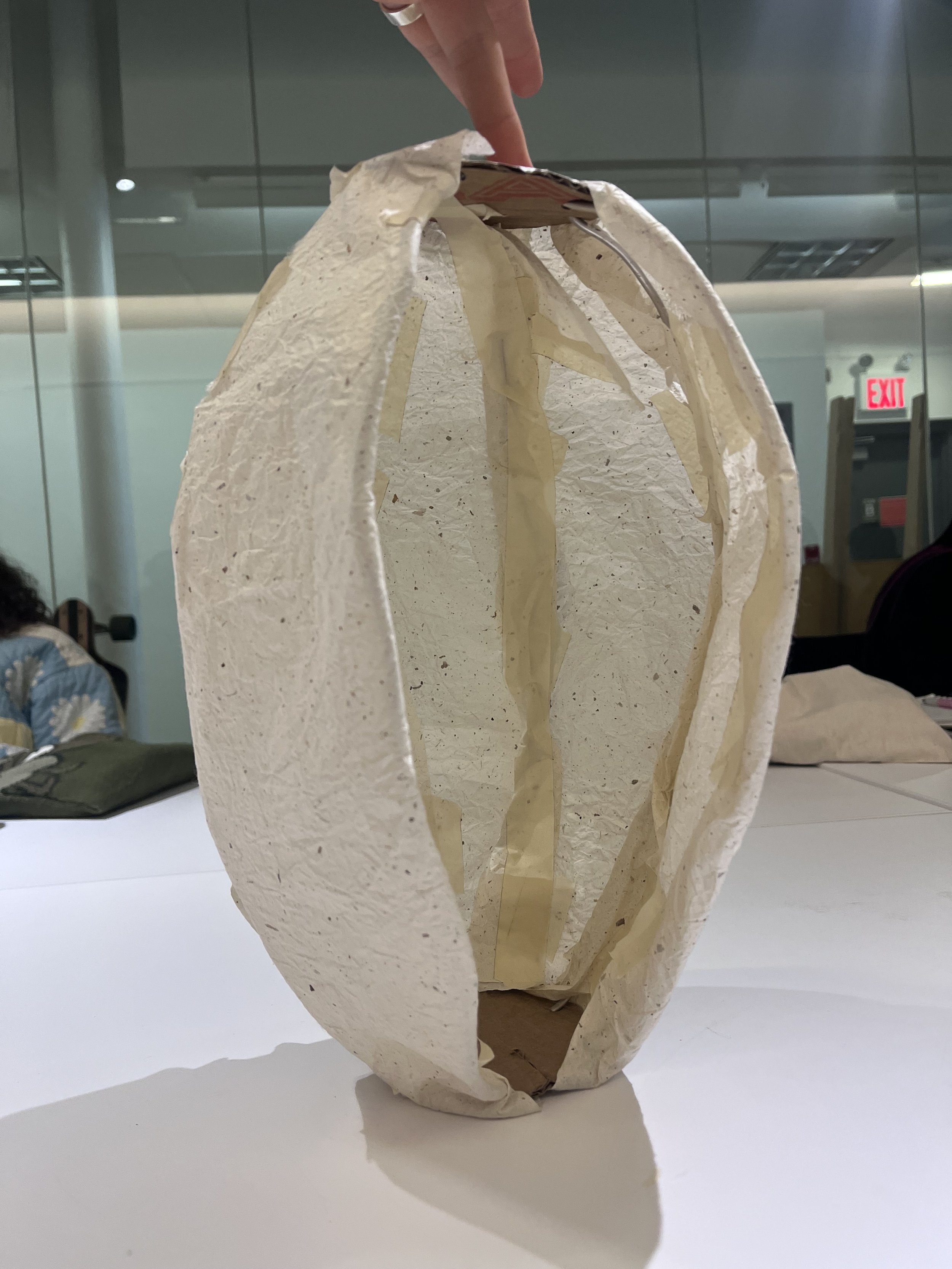
First rough model, made with paper, cardboard, and wire.
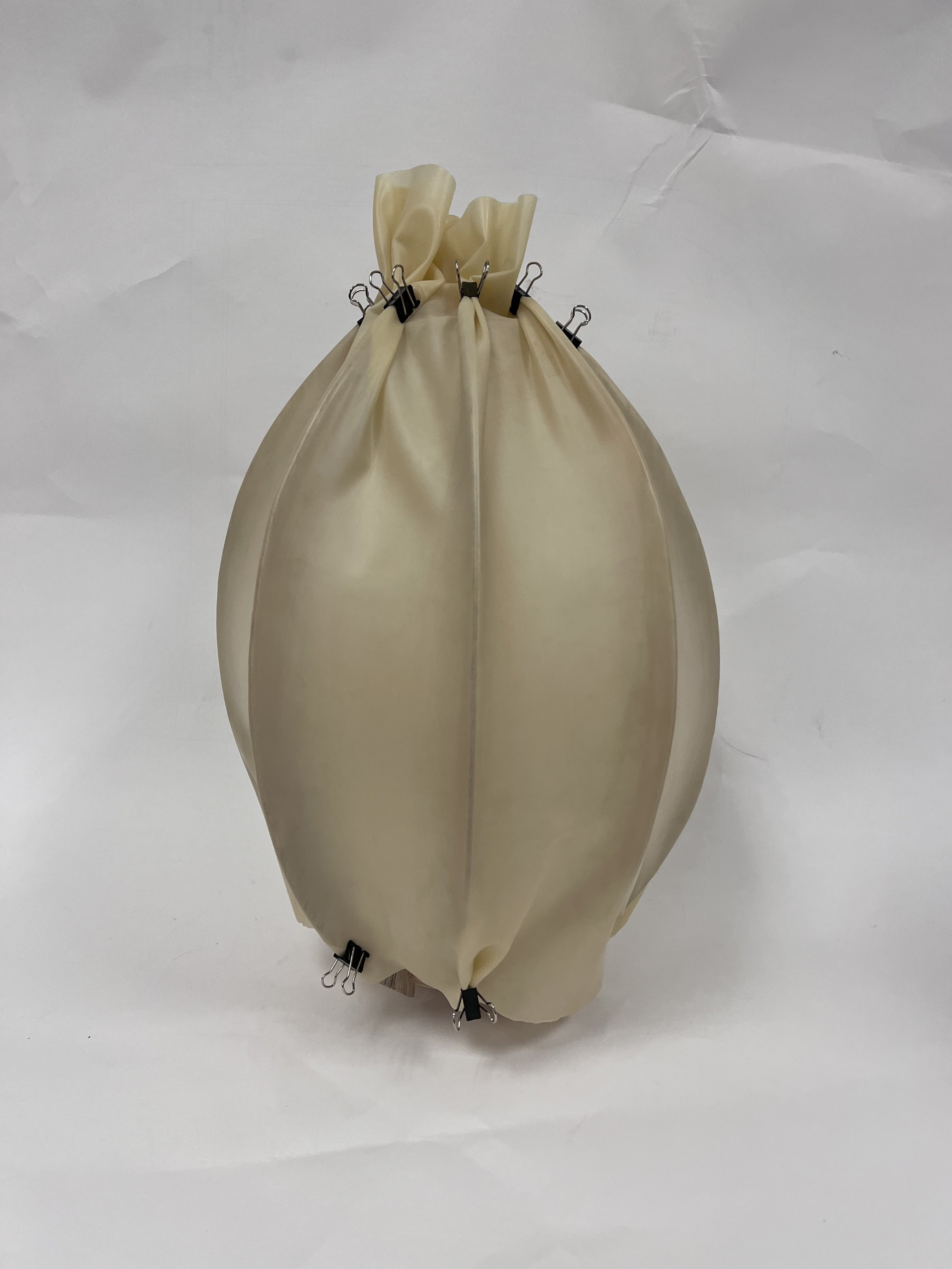
Second rough model started experimenting with the bandsaw and manipulating latex around the bulbous form.
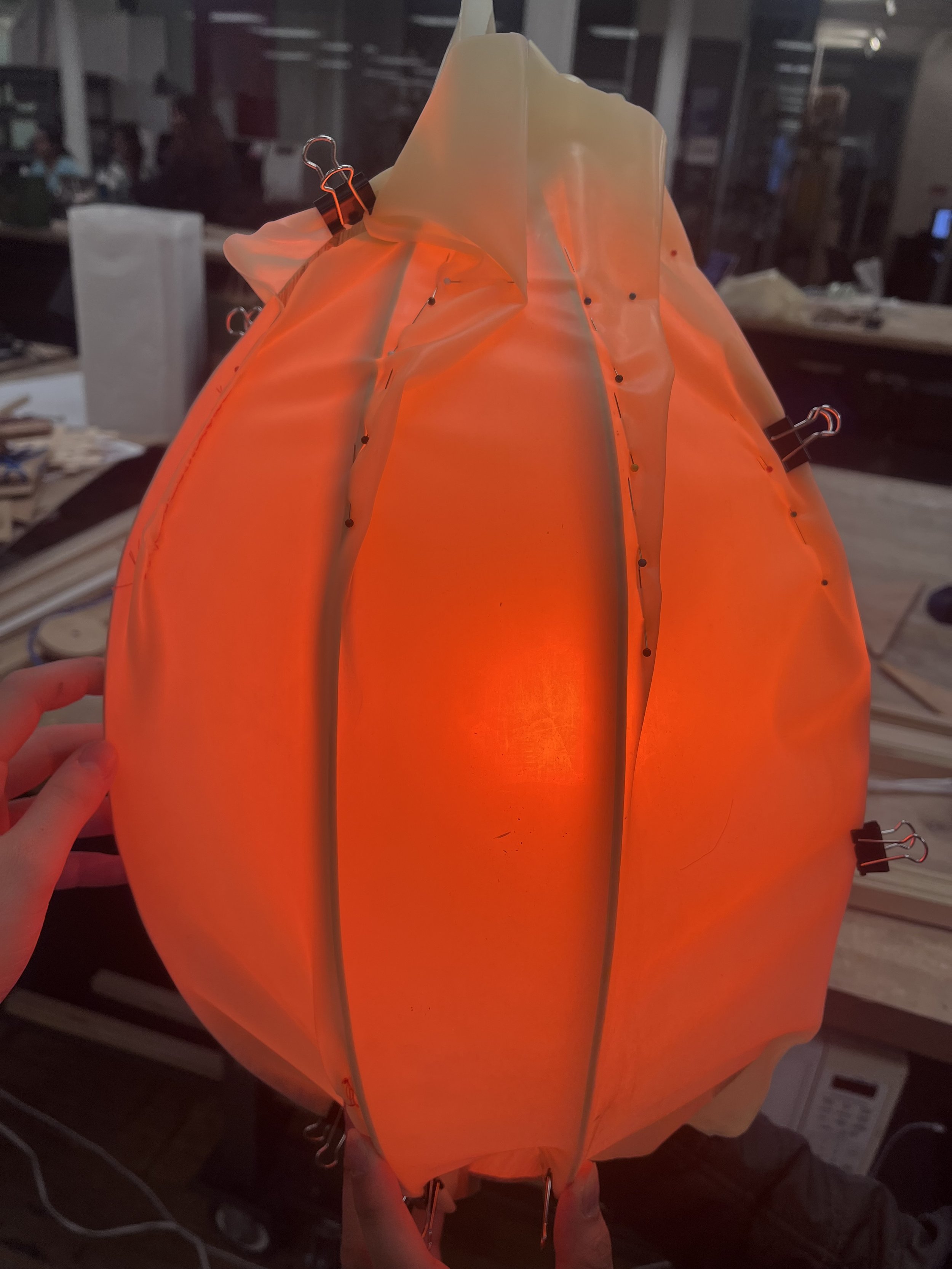
Started experimenting with the red light effect, and various methods for stretching the latex with as little slack as possible.
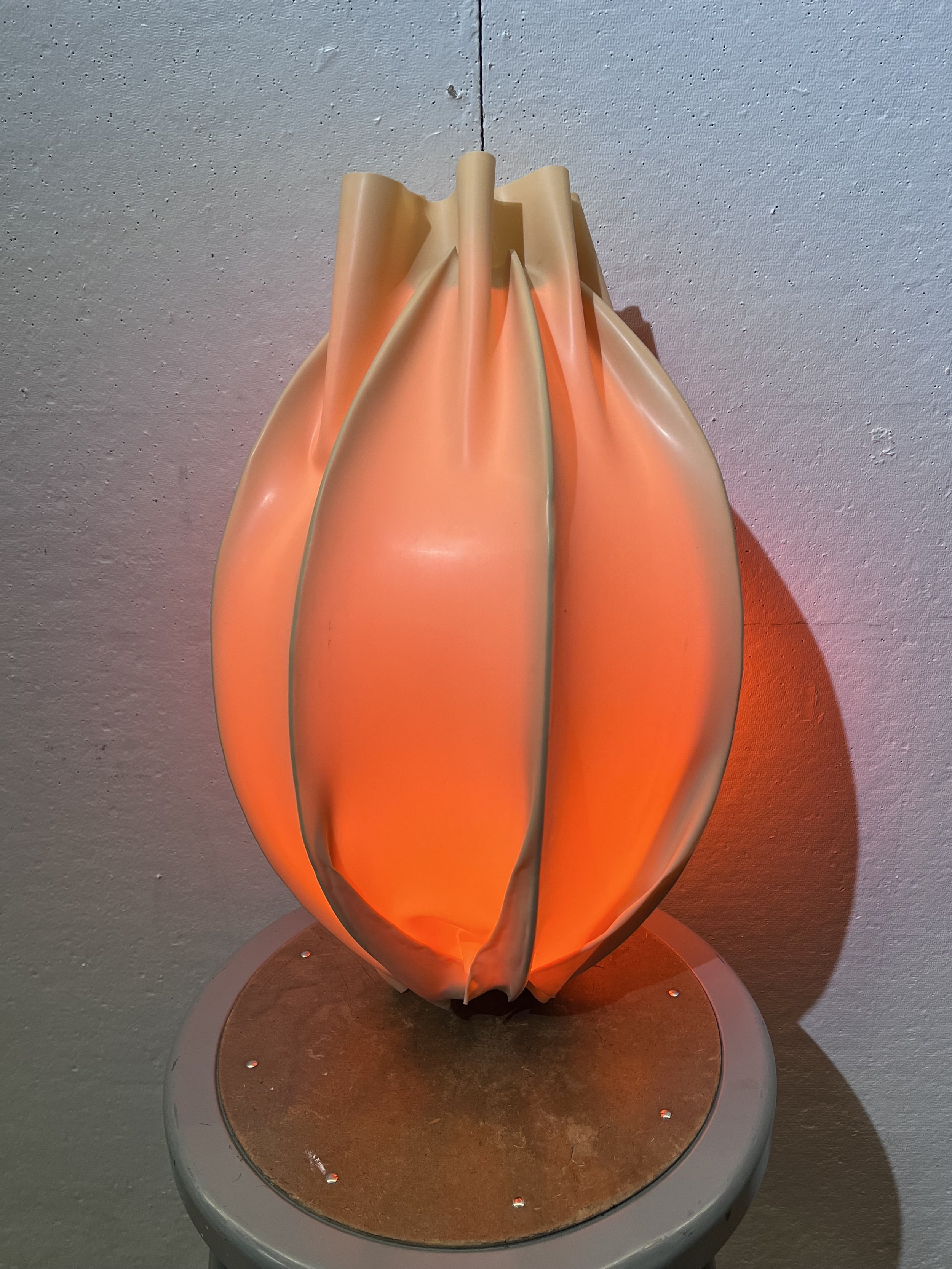
Fourth rough model, started testing different colors and thicknesses of latex.
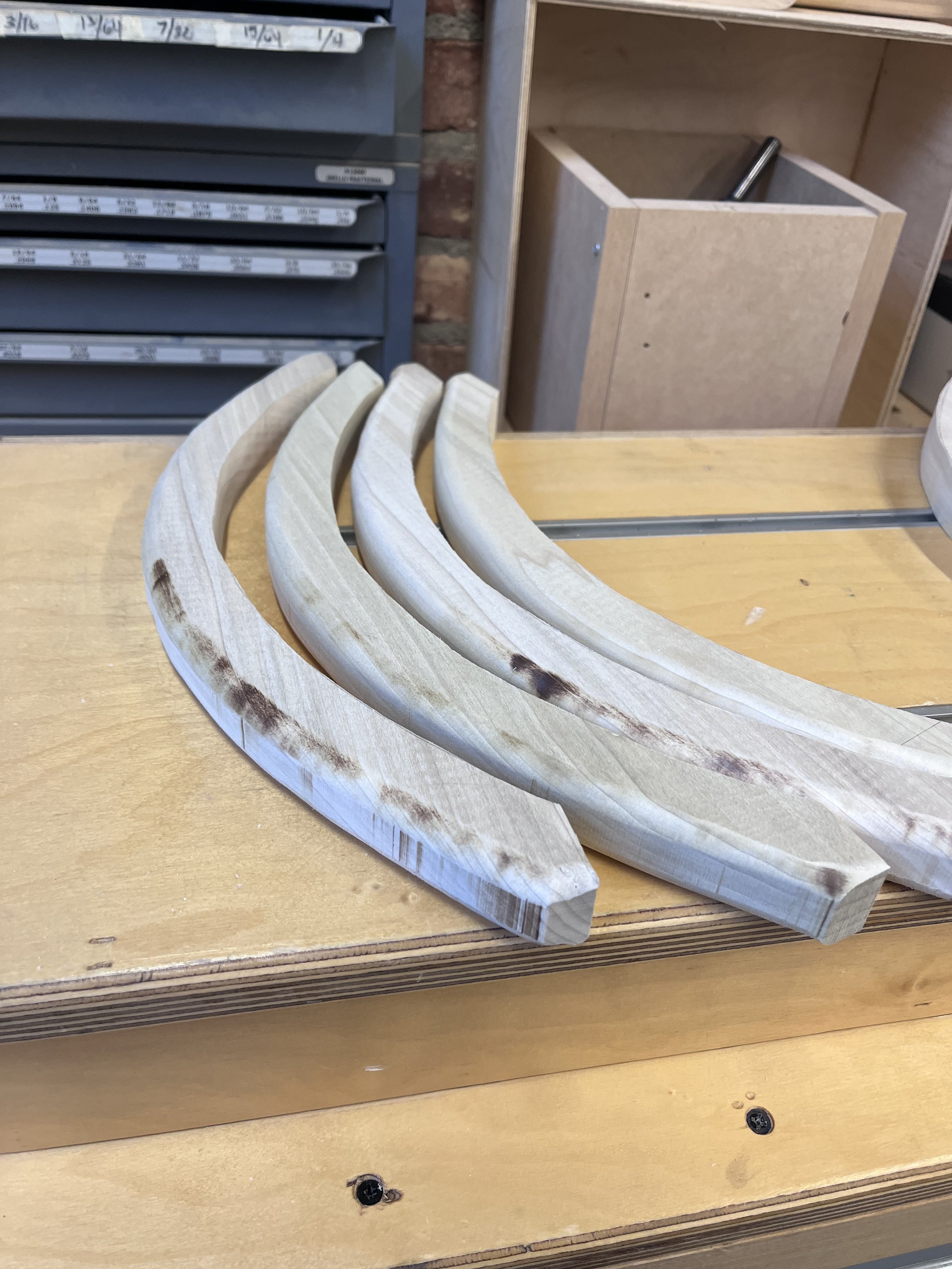
Cut poplar wood on the bandsaw and aut out "ribs" based on a templateI made on SolidWorks- then routed the edges.
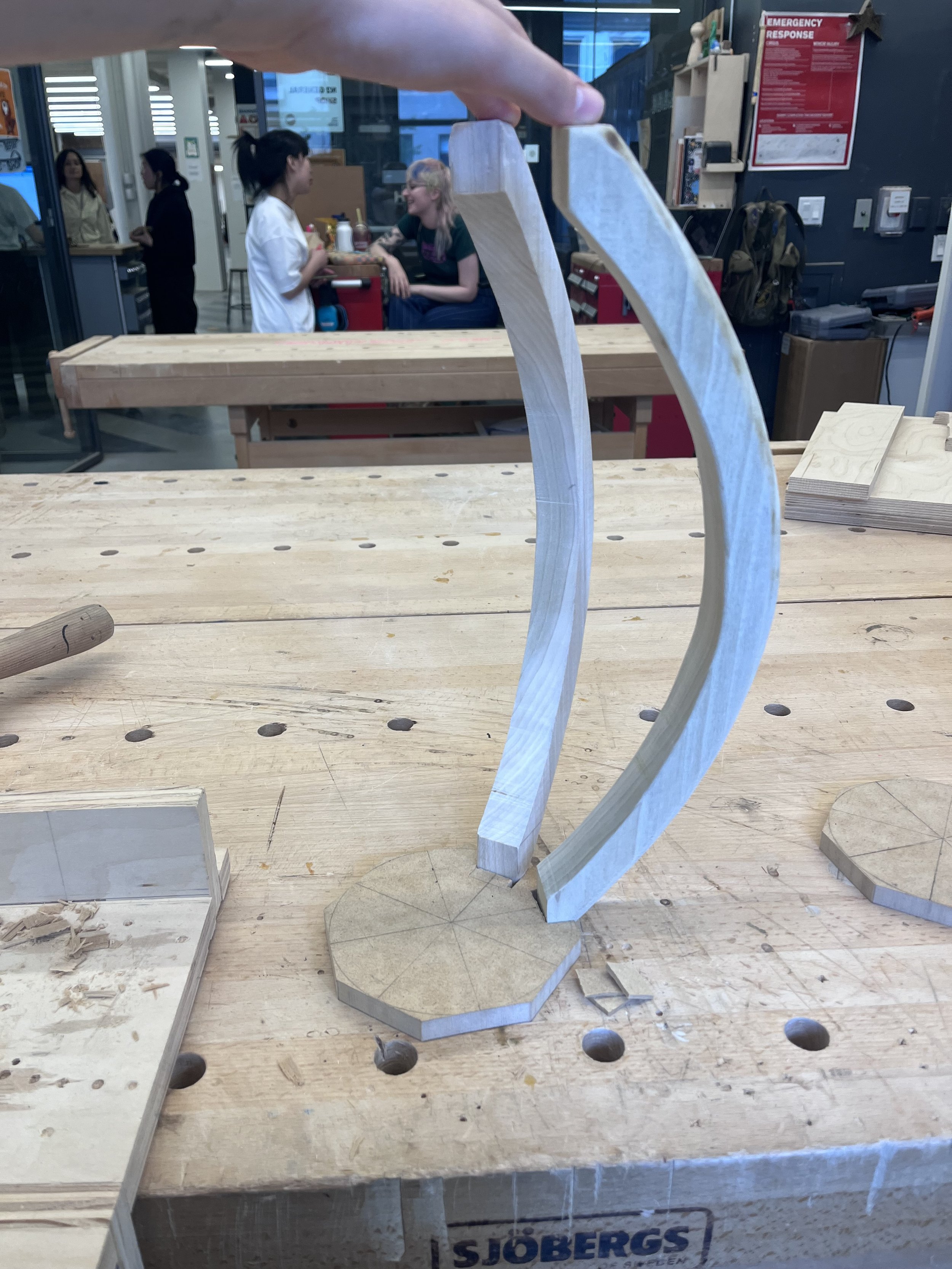
Then began working on the base using MDF to practice, learned that the dato would be the best tool for this part.
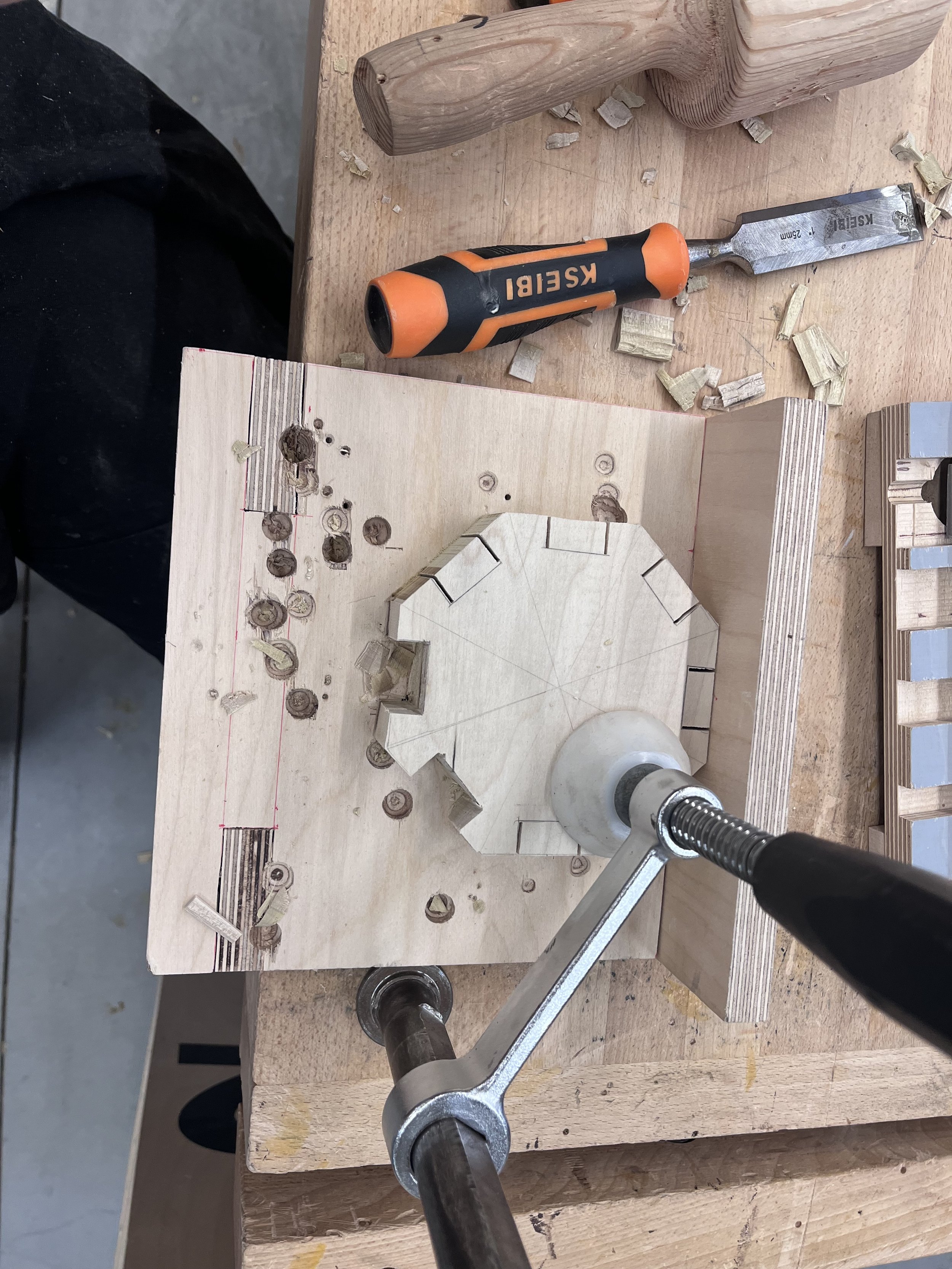
Drill pressed a hole into the top of the base for the light to fit into. Then drilled holes in my lathed block to line up with the small holes that I drilled into the base(for screws/dowels).
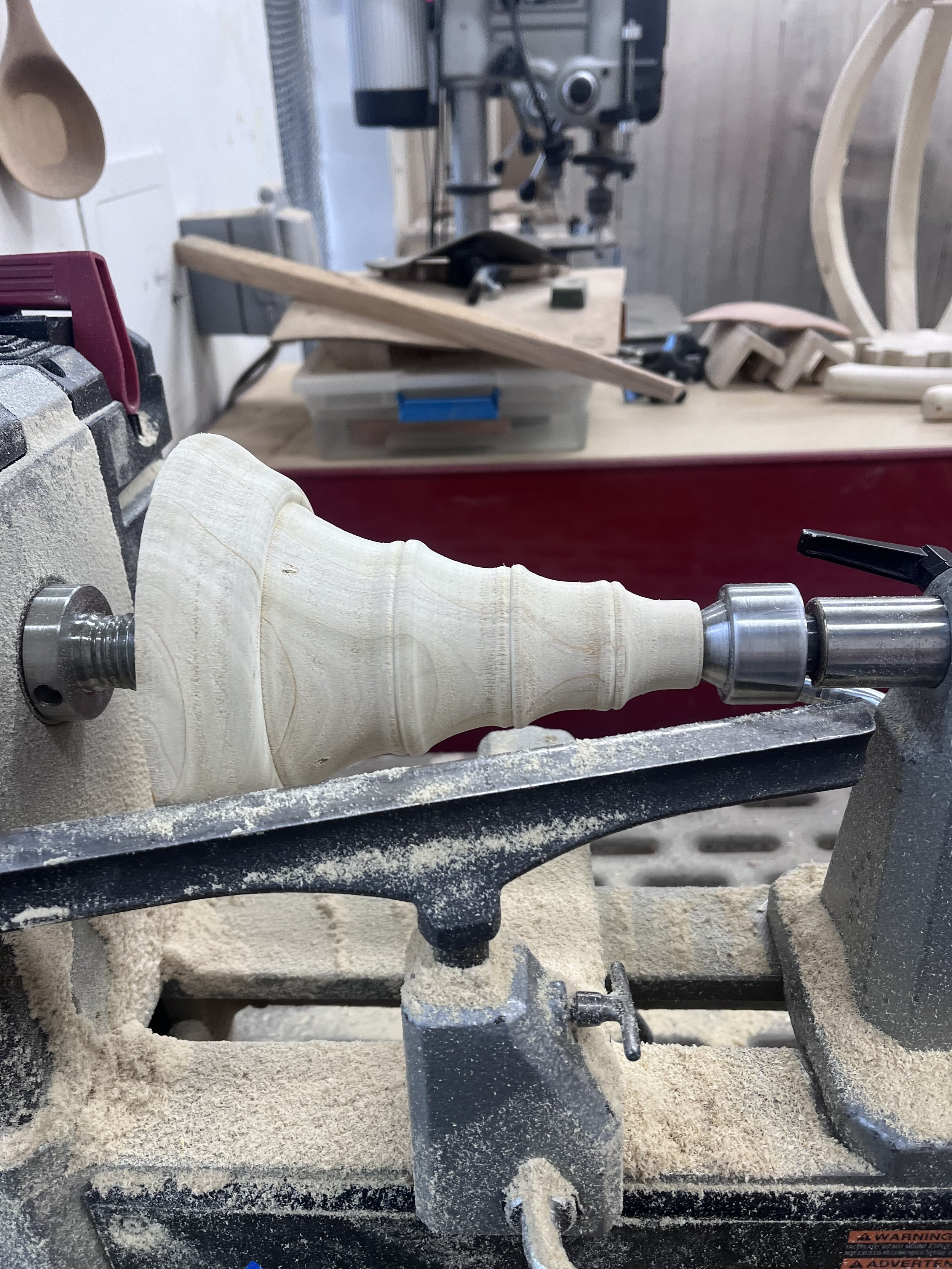
Turned my pieces on the lathe, wrapped the latex, and assembled.



